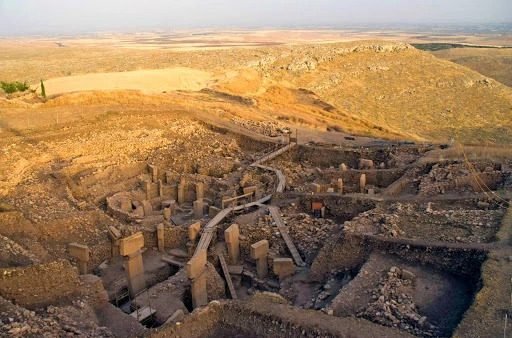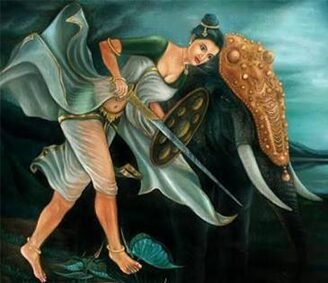Tell Qaramel: Searching for Perhaps of one of the Oldest Settled Places in Human Civilization

Located in the fertile grounds of north eastern Syria is the vailed Tell Qaramel, an ancient archeological site that has interested historians and archeologists in like manner. Situated in the Middle East and attributed to have been established following back to the eleventh thousand years BCE, the site may provide a unique view of early formation of early human society. Tell Qaramel stands as unarguable proof of the creativity and adaptability of the early people who constructed the foundations for what could possibly be one of the earliest settled networks the world over. More specifically, this blog looks into such aspects of Tell Qaramel as: The history of discovery; The enthralling journey of discovery; The meticulous diggings; and The profound role of Tell Qaramel in understanding the human history.

The Tell Qaramel might be among the oldest known human inhabited settlements which historical records even predate the world famous places such as Jericho and Çatalhöyük. Its set of experiences begins with the Pre-Earthenware Neolithic A (PPNA) stage, roughly 11,000 BCE, on a move from absolutely nomadic horticulture social orders to more settled attendant agrarian populaces. This basic shift is outlined very well on the site, where there is considerable evidence of the progress in horticulture, enduring accommodation, as well as the emergence of social and religious structures.

There is much historical evidence that places Tell Qaramel in a considerably deeper historical context that is part of a much larger development of the Neolithic Upheaval, a phase that saw significant advancement in human civilization. Archaeology of site offer The site provide such antiquity where round and rectangular houses are evidenced for the first time, further public designs they suggest the existence of coordinated social and strict practices. These enhancements are iconic to a general public that receives impressive change and is on its way to validate more persisting I elaborated, multifaceted social structures start from the transient ways of life of the tracker find.
Tell Qaramel overcomes the bounds of time in terms of its meaning; it also provides insights into the social and technical processes of the Neolithic period. The site provides evidence of early agriculture; indications of the cultivation of such plants as wheat grains; and the domestication of animals. This transition toward cultivating and creature farming makes a tremendous turning point in mankind’s account; it started un.brand and as a rule, more delayed structure, the development of civic structures.

Journey
The revelation of Tell Qaramel began mid twentieth centuries, in a period of heightened archeological regard for the Close to East. Initial prospects and excavations were carried out by European archeologist who interested in the district’s historical past and possibility of grand discoveries. Be that as it may, Tell Qaramel wasn’t being deciphered as it ought to until the late twentieth and mid 21st hundreds of years.
Tell Qaramel was recently dig a vast archaeological expedition by the Clean and Syriac archeologists somewhere from 1999 to 2011 in the vicinity of the site which would proclaim itself as the first neolithic settlement in the Middle east. These were primarily motivated with the desire to unravel antecedents of the earliest human habitation in the region that would aid in understanding the earlier stages of the Neolithic Upset. Subsequent to Pt, discoveries at Enlighten Qaramel have since examined past doubts concerning the betterment of human social orders and delayed the history of settled life as well as brought new perceptions over the social and innovative advancement of the period.

Another is the story of perseverance and collaboration which can be witnessed in the Tell Qaramel expedition. Due its location, site has become the center of different international search operations to involve archeologists, history experts, and various specialists. This cooperative exertion has generated plenty of information about the site and its significance increasing how we can perceive early human experience.
Excavation
The stripping off Tell Qaramel has been rigorous and involving, mainly due to the age of the site as well as the rather insecure concept of the unearthed artifacts. The Clean Syrian archeological group used numerous approaches, namely stratigraphic burrowing, remote sensing, and radiocarbon dating to study the site and uncover the secret of the place.

One of the major discoveries at Tell Qaramel was the sequence of five round towers, few of which are older to the well-known pinnacle of Jericho. These sanctuaries being constructed of stone with mud-block are believed to have met both defensive and communal functions. Their development when compared reflects a higher level of structural sophistication and suggest that the occupants of Tell Qaramel had acquired a modern sensibility of construction practices.
Despite that, the archeological dig exposed the fragments of the houses, storages, or shared buildings, which provided a detailed idea of life in this first formation of the village. Ordinary design features such as the round tower also shows some couverture of social interaction and integration by the inhabitants. This is additionally bolstered by the finding of different apparatus, pottery, and other nice things that propose the growth of specific specialties and trade.

This was also evident from the removal where other markers of earlier rigidity where availed, such as the stone stelae among other ceremonial items. These discoveries suggest that the occupants of Tell Qaramel were involved in sophisticated other-worldly activities which may have entailed antecedent veneration of the spirits and nature.
The last important aspect of the exhuming at Tell Qaramel is the evidence of the early developments in the agricultural practices. Archaeologists managed to find traces of domesticated plants such as wheat and grain and devices used in planting. This suggests that the occupants were among the key individuals who took an interest in farming, which was an immense makeover in the set of experiences of humankind.

Conclusion
Tell Qaramel is standing as an example of one of the first ever stages in the development of man. This position of the site has tremendous ways of giving experiences on the progression of settled life, agribusiness, and social association given its historicity and earth shattering disclosures. The emergence at Tell Qaramel can be described as an expansive narrative of team work, perseverance and a mission to seek for information. Further excavations and emergences continue to occur and as Tell Qaramel remains an important site for understanding the roots of human existence and the decisive changes that defined the course of history. Of course, it is a tradition of Tell Qaramel not only in its old designs and ancient rarities, but also in the lessons which show the versatility, creative nature and flexibility of ancient people.


